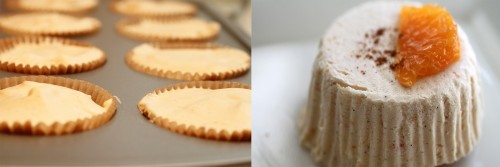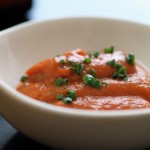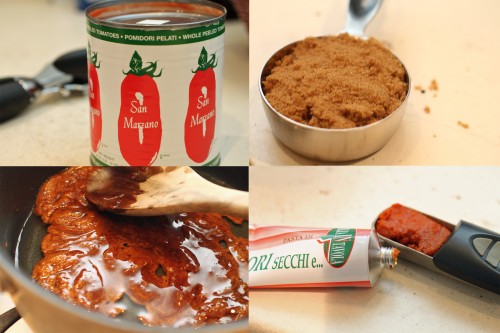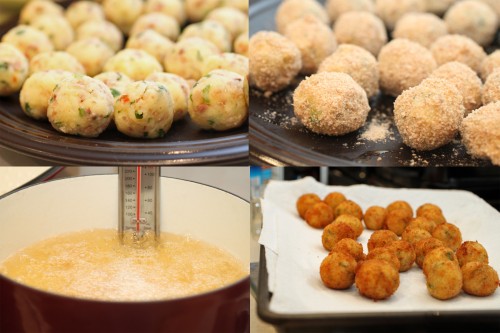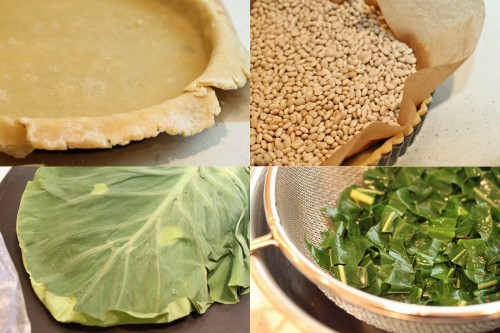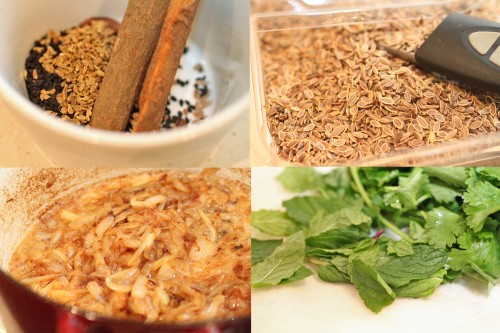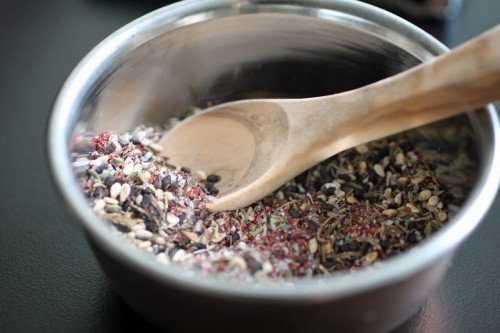Mini Gumbo Pot Pies (Take 2)
A few months back, I put up a recipe for mini seafood gumbo pot pies, spicy little pescatarian pots of joy that were topped with puff pastry crust. After visiting New Orleans, I decided to revisit this recipe and tweak it here and there. I learned so much on my trip and got a serious lesson in NOLA cooking from my friend, Gwendolyn Scott, who owns her own catering company out there. We caught the whole thing on film and wrapped it into my first webisode of Exotic Table, which I’ll post a little later this week! (All of the pics here are from the video.)
That NOLA smoked sausage is just irresistible, so you know I had to throw a little andouille in…I also made some changes to my “holy Trinity” ratio (holy Trinity is Louisiana’s catch phrase for onions, celery and peppers, which are key to their cooking) and added in a lot more okra to help thicken up my gumbo.
Thick, rich, spicy and hearty, but elegant enough to serve to dinner guests – little mini gumbo pot pies are a fun twist on an old favorite. Enjoy!
Ingredients
Yields 8 10-ounce ramekins
1 stick unsalted butter
¾ cup all-purpose flour
2 tbsps butter
1 large onion, finely chopped
1 green pepper, finely chopped
1 celery, finely chopped
1 fresno, finely chopped
1 (1/2 lb) andouille sausage, diced
4 or 5 garlic cloves, minced
Creole seasoning (recipe follows, a little over 4 tbsps)*
4 cups chicken stock
2 cups sliced okra
1/3 cup peas
½ cup heavy cream
2 dried bay leaves
½ cup sliced green onion
small handful of cilantro, finely chopped
small handful of parsley, finely chopped
1 lb mixed seafood (lump crab, rock or small shrimp, bay or small scallops, shelled lobster)**
salt and freshly ground black pepper to taste
lemon juice to taste
1 egg (beaten with a bit of cream or water)
2 sheets of puff pastry, thawed according to package directions
Procedure
Preheat oven to 400° F.
I like to start by making the roux since it takes some time to develop color. That is, melt butter in a heavy bottomed cast-iron pan (large enough) or dutch oven over medium heat. Add the flour and whisk. Continue to whisk at very frequent intervals (semi-constantly) for 15 to 20 minutes until the mixture has turned a deep chocolate brown. Be careful not to burn.
In a separate skillet, melt butter over medium-low heat and add onions and a bit of salt (to draw out the moisture). Cook for about 2 minutes and add peppers, celery. Cook for another 5 minutes, and push to veggies one side. Crank up the heat, and brown the sausage in that side of the pan. When browned, add minced garlic and creoled seasoning, mix in the veggies, and let cook for about 30 seconds to a minute until fragrant. Remove from heat, and, if the roux is ready (good timing!), add directly to the roux.
To the cooked roux, add the chicken stock and whisk to fully incorporate. Add the onion mixture as discussed, okra, peas, heavy cream, and bay leaves. Make sure none of the roux is stuck to the bottom or in the crevices of the pot. Bring mixture up to a boil and lower to a simmer for 20 minutes. You want it to thicken up, so leave it partially covered.
On a floured surface, roll out the puff pastry to about 1/8th of an inch thick. Using pastry cutters or a glass that’s larger than the diameter of your ramekins, cut out 8 circles. Make sure they are large enough to fit over top the ramekins.
To the gumbo, add the green onions, chopped herbs, and seafood. Adjust seasonings at this point, adding salt, pepper and a shot or two of lemon juice, if needed. Ladle gumbo evenly into ramekins.
Brush the tops of the ramekins on the outside with the egg wash. Place puff pastry circles on top, crimp to your desired effect, and brush entirely with the egg wash. Use a knife to make slits into the top to let the steam escape. Place ramekins on baking sheets and bake for 20 to 25 minutes until the top is brown and crusty.
*Creole Seasoning:
1 tsps onion powder
2 tsps garlic powder
1 tsps dried oregano leaves
3/4 tsp dried sweet basil
1 tsps dried thyme leaves
½ tsp black pepper
½ tsp white pepper
¼ tsp cayenne pepper (whatever you can stand!)
½ tsp celery seed
2 tsps sweet paprika
½ tsp ground mustard
**For the seafood, I like to use small pieces for a few reasons. (1) The seafood has to fit into the ramekins with room for all of the other great stuff, and (2) I only put the seafood in right before it goes into the oven – small pieces will cook perfectly (without overcooking) and pre-cooked items, like crab, don’t turn to mush. If you are using larger shrimp or decide to do this in a casserole dish rather than individual ramekins, adjust your cooking time accordingly.












